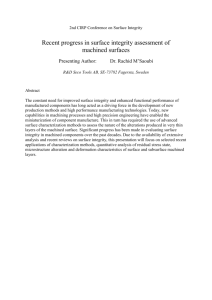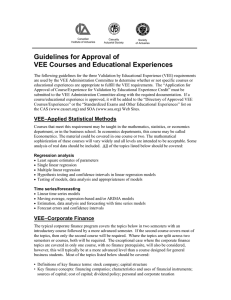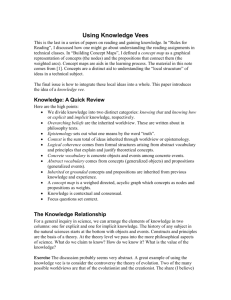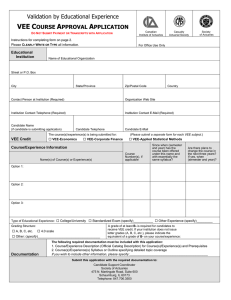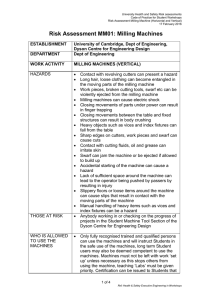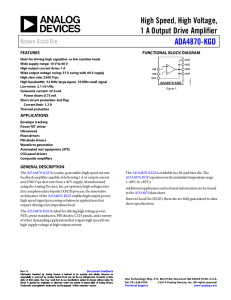MODULE 1 - Induction and Bench Fitting
advertisement
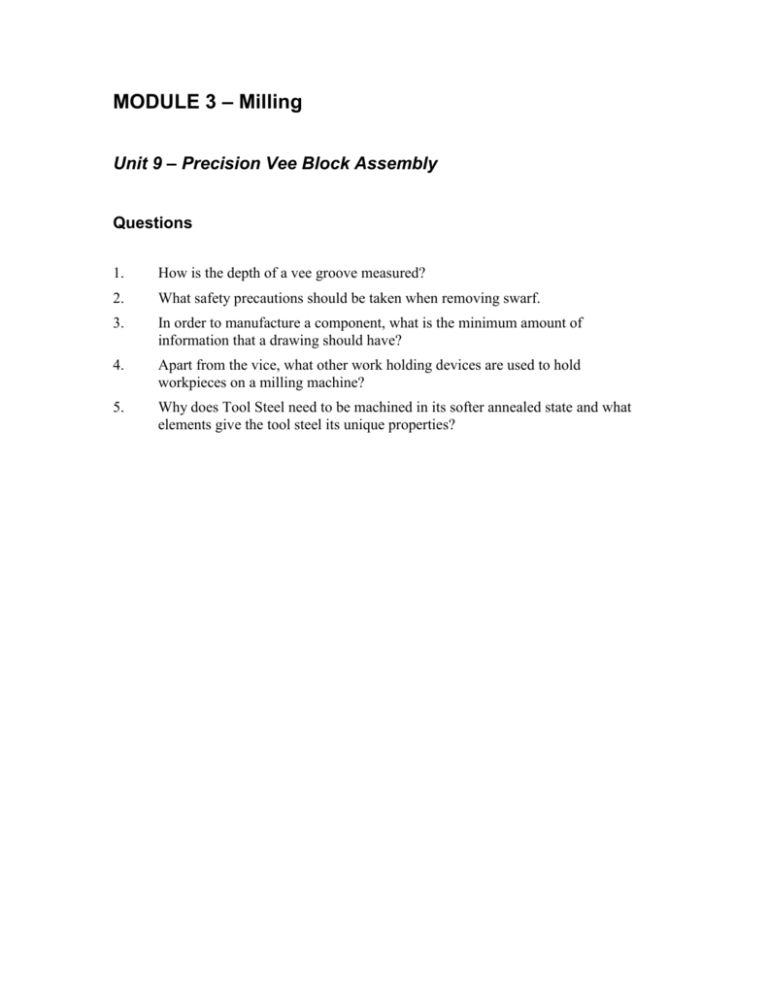
MODULE 3 – Milling Unit 9 – Precision Vee Block Assembly Questions 1. How is the depth of a vee groove measured? 2. What safety precautions should be taken when removing swarf. 3. In order to manufacture a component, what is the minimum amount of information that a drawing should have? 4. Apart from the vice, what other work holding devices are used to hold workpieces on a milling machine? 5. Why does Tool Steel need to be machined in its softer annealed state and what elements give the tool steel its unique properties? Answers 1. The depth of the vee groove is measured by placing a roller gauge in the vee and setting up two equal piles of slip gauges or parallels on the top flat surface. A depth micrometer is then used to measure the distance from the slip gauges to the top of the roller gauge. The roller diameter and the height in relation to the datum is normally specified on the drawing 2. Swarf should never be removed with your hand, use a brush. Swarf should be safely disposed of in a bin and safely disposed of. 3. The basic drawing consists of a single view or multiple views of the component, dimensions, notes, title block, description, scale, material and part number. 4. Angle Plate, which can be used to hold large plates and when machining surfaces at right angles to each other, Clamps, irregular shaped work can be clamped directly onto the table and machined in place, Vee Block, used in combination with a clamp and can be used to hold and machine cylindrical workpieces, Dividing Head, used to machine gears, circular array of holes etc. 5. Tool steel needs to be machined in its softer annealed state and can then be hardened by heat treatment. This alloy tool steel contains carbon, manganese, tungsten and chromium. When tool steel is in its hardened state it cannot be machined with HSS tools.
